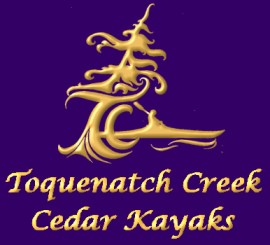While I will install glass coamings if requested, my wooden kayaks will come with a solid wood coaming. Some weight, maybe 1/2 lb, might be trimmed off by going with the glass version. I prefer the wooden rim, as it will blend and fit with the wood character of the kayak:

An alternative cockpit shape, shown below on this 17'Bear Mountain Endeavour I completed in 2000. Also note the hatch covers, constructed in this case with a yellow cedar rim.














